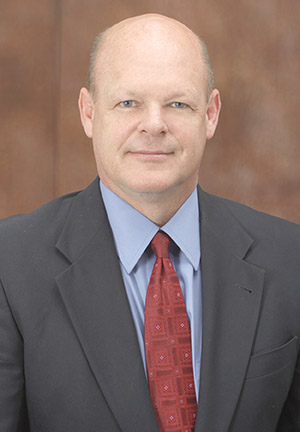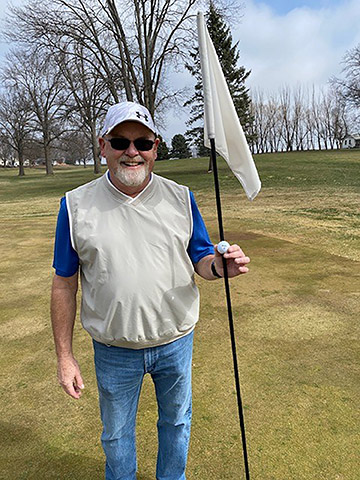Jim Adams raised two daughters. He fears nothing. Make that almost nothing. Up until spring of this year Jim feared prostate cancer.
“My grandfather died from prostate cancer in 1977, so it scared me. Just hearing the word cancer and prostate in the same sentence brought back images of him when he died and it was ugly,” he said.
As fate would have it, two years ago, as a result of his annual physical, Jim learned the level of Prostate-Specific Antigen (PSA) in his blood was above average. That could be a sign of prostate cancer, or it could indicate a noncancerous condition such as prostate enlargement or inflammation.
Jim and his doctor tracked his condition closely. Eventually, a biopsy revealed early stage prostate cancer.
“I had to be reminded that in 1977 they did not have PSA tests. They didn’t have anything. When they caught prostate cancer then, it was already too far gone to do anything about it,” Jim said as he tried to shake his fear.
Fear or no fear, Jim needed treatment. His urologist explained his options and that the success rate for each was nearly identical:
- Remove the prostate with the possibility of post-operative radiation therapy to help kill any cancer cells that may have survived surgery, or
- Leave the prostate intact, undergo 23 radiation therapy treatments and then brachytherapy. Brachytherapy involves implanting medical “seeds” in the prostate – about the size of grains of rice – that give off low-dose radiation for months after external radiation therapy ends, to help kill any cancer cells that may have survived.
As an active person – Jim golfs four days a week – he felt the surgical option carried a longer recovery time and more potentially life-altering side-effects than radiation therapy followed by brachytherapy. So, that is the option he chose.

Jim also chose to have his treatment at the nationally-accredited Blessing Cancer Center radiation oncology department under the care of board-certified radiation oncologist Rob Johnson, MD.
“Dr. Johnson explained the radiation treatments and brachytherapy in detail, gave me the notes and drawings, and even his cellphone number,” Jim said.
But he had one more hurdle to overcome before treatment could begin.
“I was still scared to death.”
As a man of great faith, Jim prayed.
“It boiled down to me praying, ‘Whatever you are going to do is fine, just take the fear away.”
Jim’s prayers were answered. His fear faded and he was ready for treatment. His two dozen radiation therapy treatments ended April 24 and the brachytherapy seeds were placed in his prostate on May 21. They will continue to treat his cancer for several months.
“It turned out the whole process was fun,” Jim said with a smile on his face. “People think I am strange when I say that. What made it fun? The radiation therapy staff and lack of fear.”
“The people here are just unbelievable” he continued. “They treat everybody like family. You don’t get treated like that anywhere else. They are perfect for their jobs and I feel as if they were all placed here for a reason. They really care.”
Jim has advice for other men: “Don’t be afraid, even though the word is cancer. You can beat this.”

Because early prostate cancer often has no symptoms, the chances of surviving the disease increase with early detection. Most experts recommend talking with your healthcare professional about prostate cancer screening around age 50. You might consider starting the discussions sooner if you're a Black person, have a family history of prostate cancer or have other risk factors including obesity and tobacco use.
Click here for more information on prostate cancer care at Blessing. The site includes information of free prostate cancer screenings being hosted by Blessing Health System at several locations in the region.
